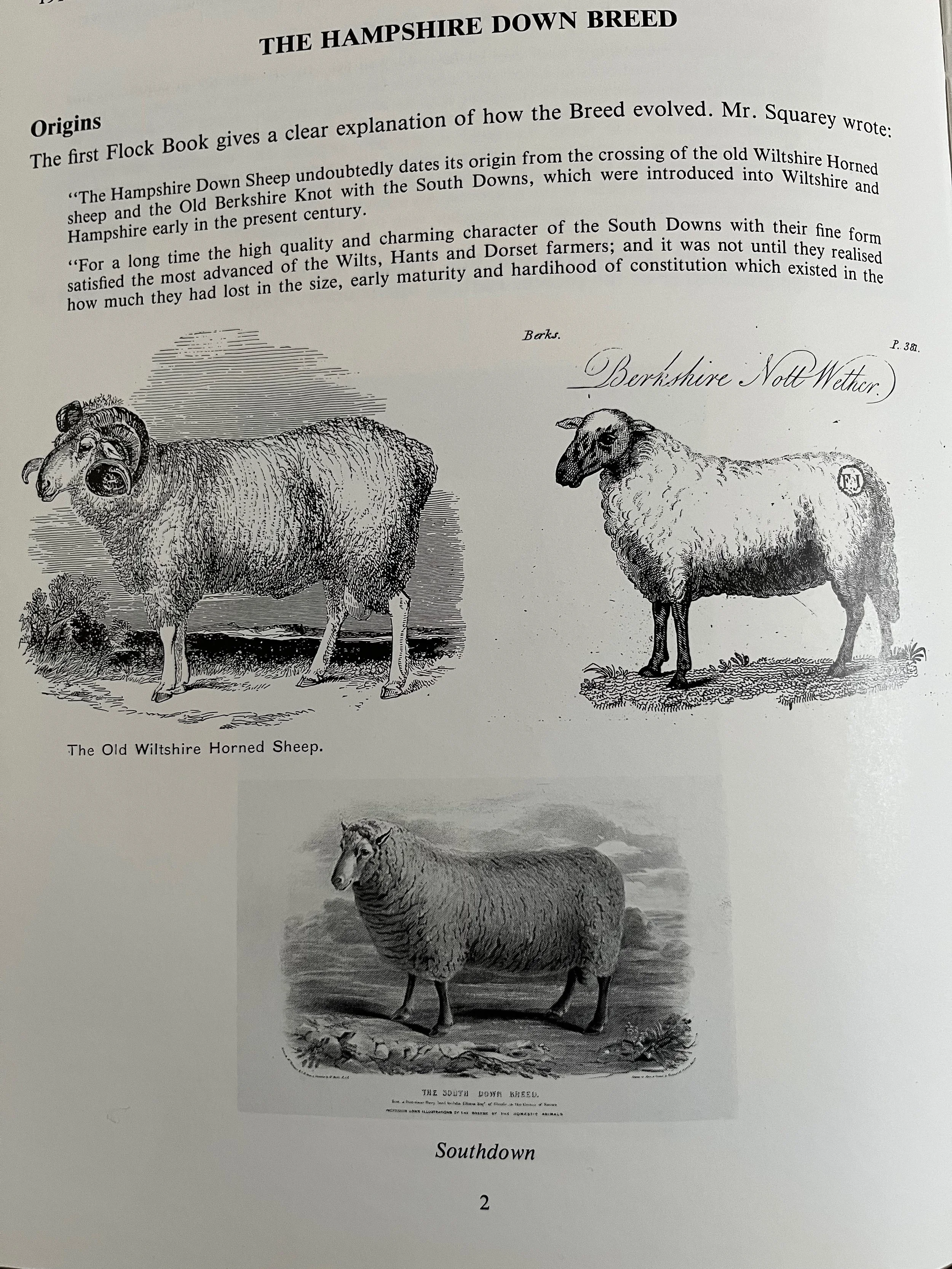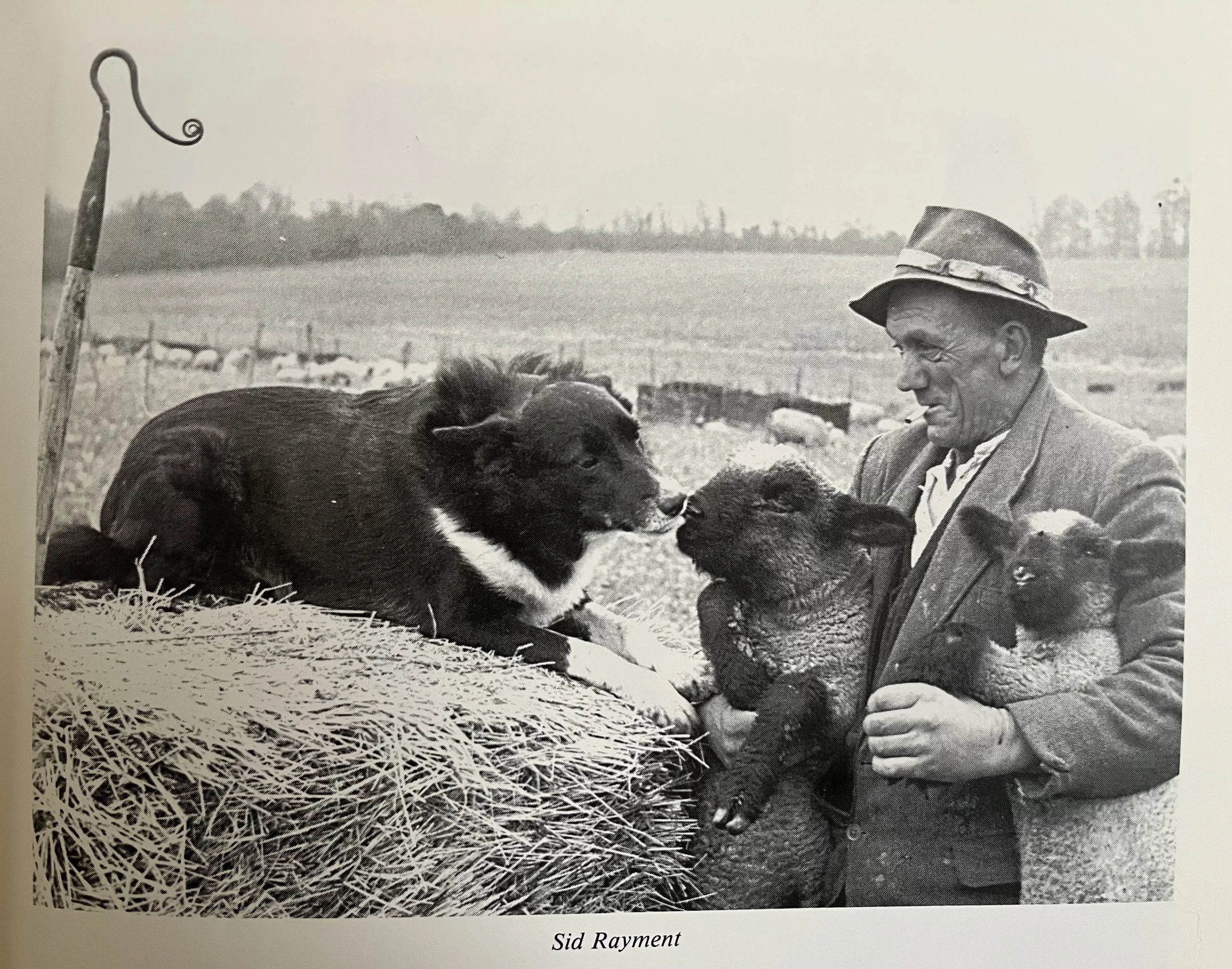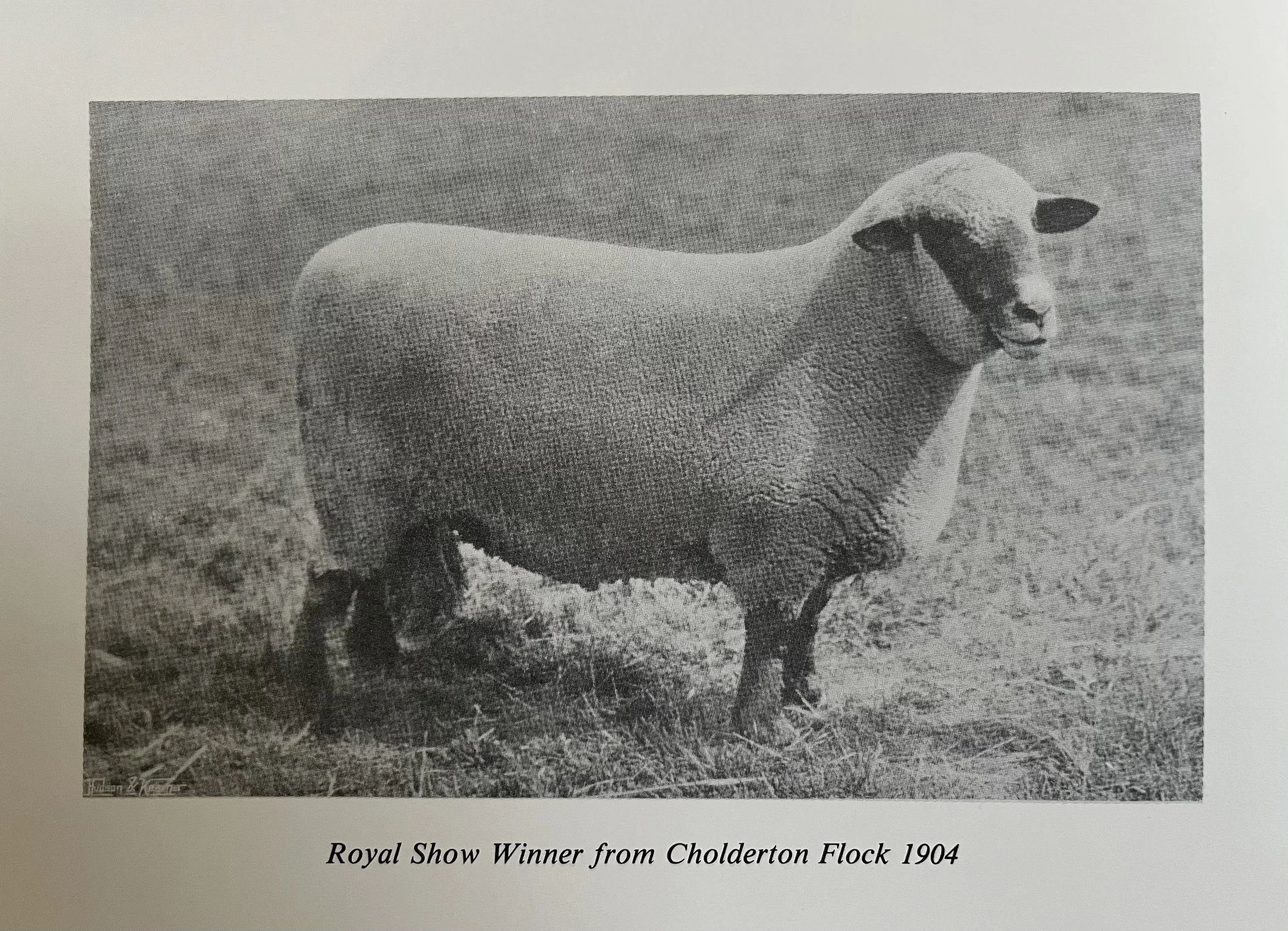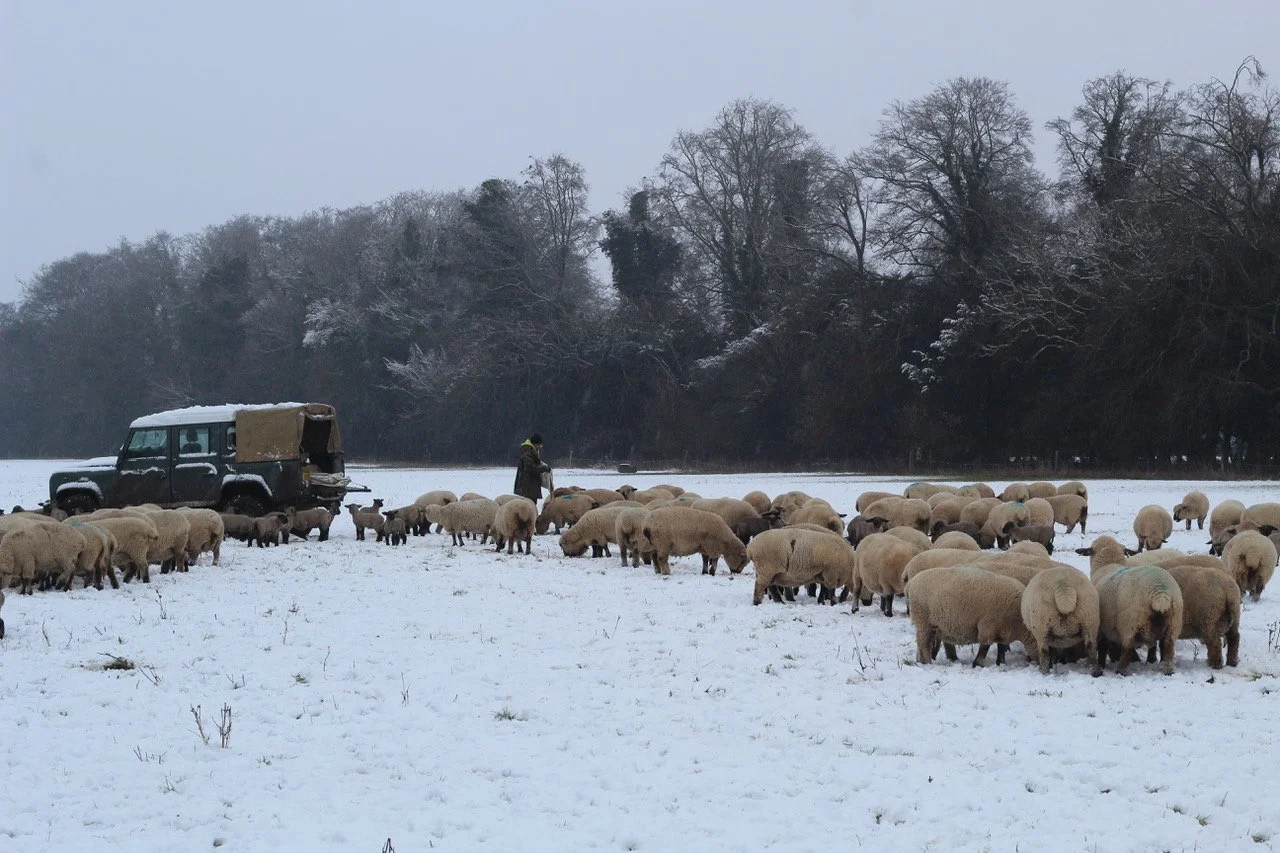HAMPSHIRE DOWN SHEEP
Henry Charles Stephens approached the stocking of his Estate as seriously as his other undertakings. With much of the estate being on the Hampshire-Wiltshire border, the Hampshire Down was the obvious sheep breed to choose. The Hampshire Down owes its origins from the crossing of the Wiltshire Horn and the Berkshire Knot with infusions of Southdown.
From the 1830s to 1850s the breed type gradually became stabilised, culminating in the formation of a breed society in 1889. By 1911, almost 200,000 ewes were registered by 514 members of the Association. The breed was of extraordinary economic importance in the South of England with a very large number of farms, particularly on the lighter soils, relying on folded flocks of Hampshire Downs to provide fertility for subsequent arable crops. The flock was also a valuable cash crop in its own right, through the sale of fat lambs, culled ewes, wool and pedigree breeding stock (nearby Weyhill Sheep Fair in 1949 pictured below):
The Cholderton Flock was founded in 1890 and by 1911 the combined total of ewes and tegs numbered 2,772 with an additional 562 registered rams. Over the winter the sheep were folded and fed on a variety of root crops. Vetches or sainfoin and grass leys provided the summer grazing. Fourteen shepherds tended the flock. About this time, the Estate was visited by Professor A Hall. In his ‘Pilgrimage of British Farming’ he records that the fame of the flock had “gone forth into all lands”. He was also impressed by the excellence of the wheat and barley grown in rotation following the sheep. Cholderton sheep have taken prizes at shows all over the South of England, recording their first win at the Royal Show in 1904 with a two-shear ram. Captain L Edmunds took over the flock in 1919 and upon his death in 1975, Mr Maurice Flower wrote, “For many years he had been a keen and able supporter of our breed, carrying it to ever greater heights at shows and sales. The famous flock was one of the first registered. At the present day the flock has the largest number of sheep of any in the breed”.
The ownership of the flock passed to Henry Edmunds in 1975 and he has since concentrated on maintaining the numbers and quality of this outstanding breed. The Cholderton Estate is now one of the most important gene banks for this breed.
